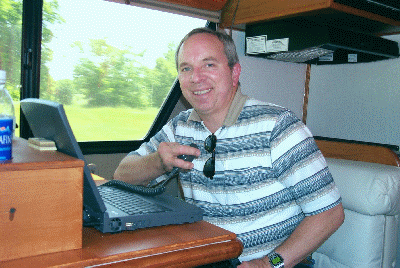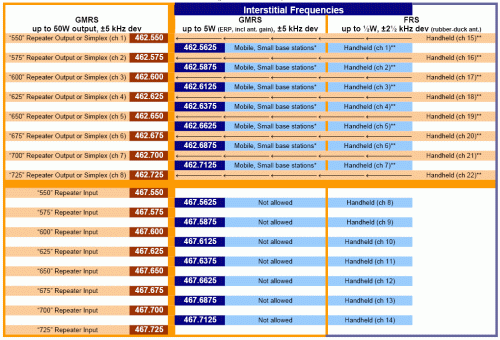Broadband Hamnet uses our radio privileges to operate a private wi-fi computer network. Applying our ham skills and capabilities, we can span a whole county and more! But we do more than just surf the web. We can communicate with this network! By reprogramming inexpensive wi-fi equipment and operating within our amateur license privileges, we can boost power, supplement the antennas, and construct a robust computerized communication network among fellow hams.
Visit our HOTARC Mesh page for much more information.
|
BBHN Links

|
One of my favorite modes is PSK. It's a great way to use your barefoot HF rig, and that soundcard in your home PC for something other than cute little Windows sounds. The reason it's called PSK'31' is because it only requires 31 Hz of bandwidth! That's right thirty-one HERTZ! In the "waterfall spectrum" snapshot shown here, you can see nine PSK QSO's in progress in less than the bandwidth of a single SSB phone conversation. This is very common just above 14.070 MHz, the typical focal point for PSK these days. Wow!!
I like PSK because it so relaxing and casual, and it requires such meager resources, and uses so little bandwidth. You can work hams around the world with 50 watts or less, sometimes when they're signal is not even audible from your rig!
|
PSK31 Links

Sample DigiPan waterfall (reduced) showing about nine PSK signals (yellow), each less than 50 Hz wide in a span of about 2000 Hz with room for lots more!
|
|
While PSK is great for HF work, it's important to stay involved with local hams, too. For that, I find you can't beat the fun of ATV. Again, it's a great way to put the camcorder and that spare television set to good use. Our local group formed the Waco Amateur Television Society (WATS), and recently merged with HOTARC. The ATV group meets on the air for an ATV Roundtable at 8:30 pm almost every night to share and informally interact with ATV images and SSTV photos (via 2 meters). Our ATV repeater allows everyone in the county to participate. We also are proud of our Skycam located in downtown Waco, activated and operated via 2 meters. |
ATV Links

(Click, wait a few seconds, & view a QuickTime panorama——
Pan and zoom the movie.)
Here's a sample of the Brazos River Valley and the Waco Suspension Bridge overlooked by our Skycam. Of course, we can remotely pan, tilt, and zoom the camera. What fun!
|
|
Have you tried Slow Scan TV (SSTV)? It's yet another way to use some of the stuff lying around your house or computer room, mostly under-utilized. With free software, you can put your digital camera and your soundcard to use to send digital pictures (GIF, JPG, etc) over HF, VHF, or other voice-capable rigs. Since I'm already set up for PSK, trying out SSTV was a snap! The latest fun is with DigTrx: sending slow-scan digital images and files
|
SSTV Links
-
Larry Bush's SSTV pages
- MMSSTV, the best freeware for SSTV (and many other applications, too) via a Windows soundcard.
- DigTrx, a Windows soundcard way to send perfect digital images and small files via standard phone bandwidths. This is not packet!)
- Hopefully we'll be seeing some SSTV from the ISS (space station) someday!

Here I am operating SSTV mobile from a motor home en route to the 2002 Dayton Hamvention. What a hoot!
|
Have you noticed the increase in popularity of the little FRS radios? Most models now also include GMRS channels. But what does that mean?
It certainly seems to me that the FRS program is following close behind CB radios, in that it is creating another unenforceable quagmire for the FCC. For the record, if you operate GMRS, you are required to have a GMRS license. (try to say that with a straight face)
The overlap of GMRS and FRS frequencies and their various limitations are truly confusing. I created a table here which IMHO concisely summarizes the several pages of FCC Rules (Part 95) describing this matter. You may not know: GMRS repeaters are allowed. And, FRS radios are only permitted half the deviation of GMRS radios: in plain English, they'll sound "weak" compared to GMRS radios.
Click the image shown to the right for a larger version, and a link to a PDF (printable) version.
|
GMRS and FRS Frequencies and Transmitting Limitations

|





